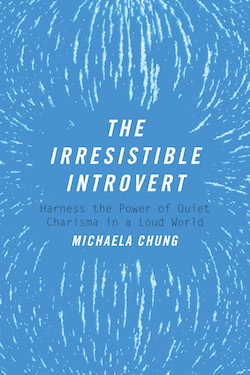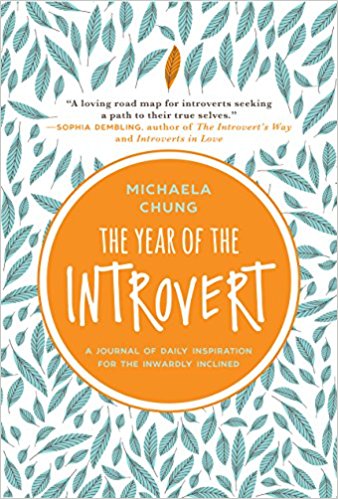
Some places instantly take the weight off our shoulders. The air feels softer, the light kinder, the noise far away. For introverts, those moments aren’t a luxury—they’re essential. After a day spent absorbing other people’s voices, moods, and demands, our surroundings can either piece us back together or drain us further.
Home is where we rebuild. The way it’s designed—the light, the textures, even the way sound travels—shapes how quickly we recover from the world outside. Science is catching up to what we’ve always known: the right environment restores us faster than hours of scrolling or collapsing on the couch.
The Psychology of Solitude
We introverts process stimulation differently from extroverts. Our brains respond more strongly to external input, which means we hit our limit faster. After that, even small noises or casual interactions can feel overwhelming. Solitude quiets the outside world so our minds can return to a steady rhythm.
Quiet time gives our prefrontal cortex, the part of the brain responsible for decision-making and focus, a chance to recover from constant demands. Studies on restorative environments show that peaceful, low-stimulus settings can lower cortisol, ease muscle tension, and help regulate heart rate. A calm space does more than feel pleasant—it actively repairs the strain left by overstimulation.
When our surroundings work in our favor, that recovery comes even faster.
How Your Home Can Boost or Drain Your Energy
Some homes hum with quiet harmony. Others buzz with a static we can’t quite escape. Harsh lighting, constant background noise, or cluttered layouts can keep our nervous system on alert. Even when we’re alone, the space can feel restless.
By contrast, soft natural light, a balanced layout, and calming colors signal to our brains that it’s safe to relax. A chair positioned by a window with a view of trees can slow our pulse in minutes. A cozy corner can become the place where our thoughts finally have room to stretch out.
Creating Your Personal Recharge Zone
We all need a place that feels entirely our own, a spot where the day’s demands can’t follow us. Building that sense of refuge doesn’t require a full renovation. Small, thoughtful changes can turn an ordinary room into a retreat for introverts.
Start with sound. A white noise machine, heavy curtains, or even a bookshelf can buffer outside distractions. Then consider sightlines. Too much visual clutter—like piles of mail or open closets—can keep our minds from resting. Calming tones, soft textures, and warm lighting help shift us into a quieter state.
It also helps to create boundaries. A chair by the window no one else uses. A reading nook we return to after work. These spaces aren’t just physical—they’re signals to our minds that it’s time to recharge.
Spaces Designed for Peace
Some homes are built for quiet. They’re not about sheer size or flashy features; they’re about creating a space where every detail supports rest. For many of us, that often means smaller layouts that feel manageable and comforting.
A few options stand out. Tiny houses offer efficiency and portability, making simple living possible anywhere. Remote cabins provide solitude surrounded by nature, where the only sounds are the wind in the trees and bird calls.
One option that fits this idea beautifully is park model homes. These compact dwellings offer everything we need without the excess that can overwhelm our time and senses. Often found in scenic settings, they make it easy to enjoy fresh air and natural light without leaving home. Their simplicity reduces visual clutter, while their size encourages keeping only what truly adds comfort or meaning.
Whether it’s a cabin in the woods, a cottage near the water, or a small suburban retreat, the best spaces for peace match the scale of our energy.
The Nature Connection
Nature softens the edges of a long day. Even a short glimpse of greenery can calm an introvert’s racing thoughts and steady a restless mind. For us, that effect can be profound. When the world feels too loud, natural surroundings work like a mute button, replacing the static with something soothing.
Time near trees, water, or open skies can lower stress, improve focus, and lift mood for hours. A window view of a garden, a balcony with plants, or a walking path nearby can offer these benefits without requiring a trip away.
When our living space connects easily to the outdoors—through a forested backyard, a sunlit porch, or a nearby park—it extends our solitude beyond the walls.
Making Solitude a Daily Ritual
Solitude works best when it’s part of daily life, not saved for rare moments. It might mean starting the morning in a favorite chair with tea or ending the evening with a short walk under the stars. The more consistent these moments are, the more our minds expect and rely on them.
Treat this time as non-negotiable. Introverts can protect this time by setting boundaries at home, turning our phones off, and resisting the pull of constant media. Protecting this space is self-care, not selfishness. Over time, these rituals become instinct. That’s when we experience the quiet confidence of enjoying our own company, not as an escape but as a way to stay grounded and present.
Designing a Life That Refuels You
The spaces we choose shape how we feel, think, and recover. A well-designed home isn’t just somewhere to live—it’s part of how we introverts recharge. When the light is gentle, the sounds are softened, and the air carries a hint of the outdoors, it’s easier to release the day’s noise and settle into ourselves again.
Creating that kind of environment is an investment in more than comfort. It’s a way to protect the part of us that thrives in quiet, to give our thoughts space to grow without interruption. Science can explain why it works, but we already know the feeling: a space that greets us like an old friend and sends us back into the world restored.










